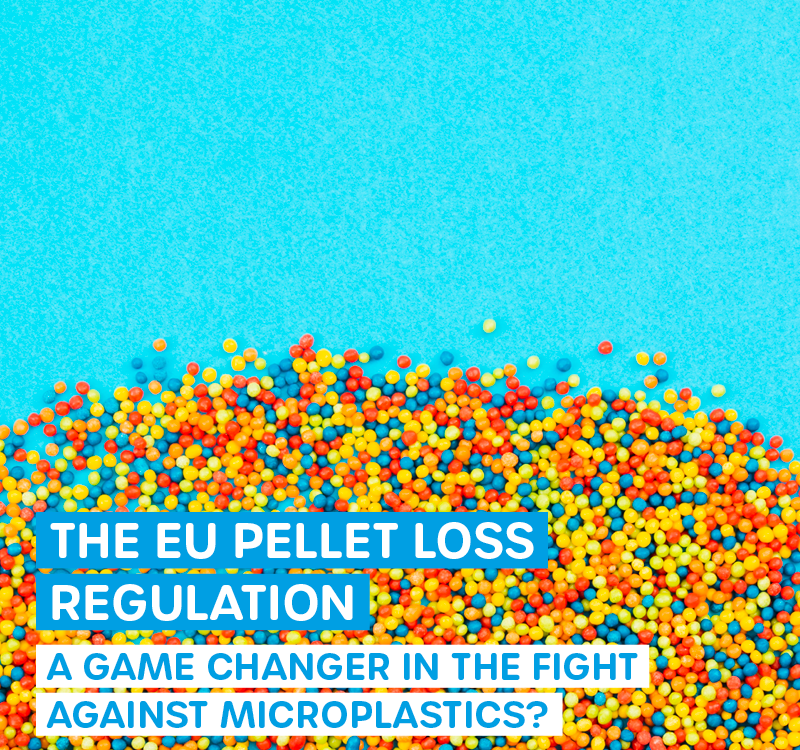
What about the future of our water?
The future of our water depends on many factors, and it is important that we are aware of how valuable and scarce water resources, especially the availability of clean, drinkable water, can be.
In some regions of the world, and by that we don't just mean countries in the Global South, but also regions in Germany and therefore on our doorstep, there are already water shortages, droughts, and problems with polluted water.
Added to this is climate change, which is scientifically proven to exacerbate these situations as it changes the weather and influences water availability.
To ensure a sustainable future, it is therefore crucial to:
use water efficiently
- avoid pollution
- prevent diffuse and uncontrolled discharges of substances into the environment
- protect water sources.
Conscious water usage in everyday life, such as saving water when showering, can also make a big difference. If we take responsibility together and find sustainable solutions, we can ensure that future generations also have access to clean water.
Natural water cycle
The natural water cycle, also known as the hydrological cycle, describes how water is constantly in motion. Water evaporates from oceans, lakes and rivers due to the sun, rises into the air as water vapor and forms clouds. These clouds transport the water and ultimately allow it to fall back to earth as precipitation - i.e. rain, snow, or hail.
The water then flows into rivers, seeps into the ground or collects in lakes and oceans before the cycle starts all over again.
This process is essential for life on our planet, as it constantly renews and distributes the water.
“Water Planet” and the distribution of water on Earth
The term “water planet” refers to our home, Earth. Because around 71% of our planet is covered by water, it is referred to as the "water planet" or "blue planet". This water is found in the oceans, seas, lakes, rivers, glaciers, and groundwater. We have dedicated a whole chapter to water types. You can find out more here.
Although water is very abundant on Earth, only a small proportion of it, around 2.5%, is fresh water that we can use for drinking, agriculture, and other purposes. The term “water planet” emphasizes how important water is for life on Earth and how unique our planet is in terms of its water reserves.
Water availability and the National Water Strategy in Germany
Water availability refers to how much water is available in a region or in the world to meet the needs of humans, animals and plants. It depends on various factors, such as:
- climate
- rainfall
- use of water sources
- environmental pollution
In some areas water is scarce, for example in desert regions or during prolonged periods of drought, while other regions have sufficient or even abundant water. Water availability is also influenced by human activities, such as the construction of dams, the pollution of rivers or a high-water consumption in cities and for agriculture.
As water is a vital resource, it is important to monitor water availability and use this vital resource responsibly to avoid shortages and environmental problems.
The National Water Strategy is an important instrument in this respect. In Germany, it is an important framework for ensuring the sustainable use of water. It was developed to protect water resources, improve water quality and guarantee the water supply for the future. The strategy sets targets such as:
- Reduction of pollution and protection of water bodies
- Efficient use of water
The strategy should also consider climate change, which can have an impact on water availability.
Through measures such as the expansion of water protection, the promotion of sustainable water use and the improvement of water infrastructure, Germany wants to ensure that future generations also have access to clean water. It is an important step towards linking the environment, economy and society in a sustainable way regarding water.
Water pollution and (waste)water purification
Water pollution refers to the discharge of pollutants into bodies of water such as rivers, lakes, seas, or groundwater.
The most common pollutants in our environment include:
- Chemicals from agriculture: fertilizers, pesticides and herbicides enter rivers and lakes through rainwater and pollute the water.
- Industrial waste: including many known and unknown chemicals, such as PFAS or organophosphorus compounds, heavy metals, microplastics, or mixtures of substances that are produced during industrial processes can end up in wastewater and also in our water bodies.
- Household wastewater: Soaps, detergents, medicines and cosmetics that enter wastewater treatment plants can pollute the water if they are not completely removed.
- Garbage and plastic: Plastic residues, garbage and other waste that is not disposed of properly and ends up in water bodies pollutes the water and harms animals and plants. They have direct negative impacts on biodiversity.
- Faeces and wastewater: Inadequately treated wastewater contains bacteria, viruses and nutrients that can contaminate the water and cause disease.
- Heavy metals: Lead, mercury, cadmium and other metals can enter the water through industry and traffic and are very harmful.
It is important to reduce these substances and keep water consumption and pollution to a minimum to protect our waters. There are wastewater treatment plants for this, but common sense should always remind us that we too are responsible for our water.
In general, it can be said that any kind of water pollution should be prevented from having a negative impact on the environment, the animal and plant world, and us humans who are all dependent on clean water. To guarantee good water quality in the future, it is important to take measures to protect water, prevent pollution, and keep our waters clean. This concerns both the responsible handling of chemicals and waste (precautionary principle, producer responsibility) and the expansion of wastewater treatment plants and environmental monitoring.
More detailed information on how a wastewater treatment plant works and on wastewater treatment can be found here.
Drinking water extraction, drinking water supply, seasonal drinking water shortages
In most cases, drinking water comes from natural sources such as:
- groundwater
- rivers or lakes.
In Germany in particular, groundwater is the most important source as it is often very clean and well suited for drinking water supplies. Sometimes surface waters such as rivers are also used, but this must then be specially treated.
Drinking water from bank filtrate comes from water that collects in the ground near riverbanks or lakes and is purified through natural filtering processes. This process is also known as "bank filtration" or "bank filtrate".
You can imagine the process like this: When water seeps into the ground near a river, it passes through various layers of soil such as sand, gravel and clay. These layers act as natural filters and remove many impurities, germs and pollutants from the water. The filtered water then collects in aquifers – underground water reservoirs that can be used for drinking water supplies.
The water from bank filtrate is often very pure because it has been filtered through the soil layers. However, before it is used as drinking water, it usually undergoes water treatment to ensure that it meets all quality standards. This method is environmentally friendly and sustainable because it uses natural filtering processes and often involves less chemical treatment.
One problem caused by climate change is the seasonal shortage of drinking water. It describes a situation in which water supplies in a region become scarce at certain times of the year, usually during dry periods or in summer. The causes are varied and range from:
- Drought: low rainfall means that rivers, lakes and groundwater reserves contain less water.
- High water consumption: Especially in summer, water consumption increases due to irrigation, garden maintenance, bathing and other activities.
- Changing weather conditions: Climate change can cause dry periods to become longer and more intense.
With the causes come the known consequences:
- Water shortages: people, agriculture and industry have less water available.
• Restrictions: Water cut-offs or restrictions on water supply may become necessary.
• Environmental pollution: Rivers and lakes dry up, affecting flora and fauna. The dilution principle no longer works as there is too little water available. Environmental pollution is increasing.
Possible measures to counteract the seasonal shortage of drinking water:
- Saving water: Conscious consumption behavior, e.g. when watering or showering.
- Water reuse: recycling and efficient use.
- Education: Raising public awareness of how to use water sparingly.
How does drinking water treatment work?
If you take a general look at the technical processes involved in drinking water treatment, it works in several steps. The aim is to provide water of the best quality and in a clean, drinkable state. The process steps are as follows:
- Pre-treatment: the water is first filtered to remove coarse impurities such as leaves, sand, or small stones.
- Flocculation and sedimentation: Chemicals known as flocculants are added so that small particles and dirt clump together and settle. The water is then left to settle in basins so that the solid particles sink to the bottom.
- Filtration: The water is pumped through filters consisting of sand, gravel, or activated carbon. This removes even smaller impurities and odors.
- Disinfection: To kill germs and bacteria, the water is usually treated with chlorine, ozone or UV light. This ensures that the water is germ-free and does not cause any illnesses.
- Final inspection: The water quality is checked regularly to ensure that the water meets legal standards and is healthy. The aim is to provide clean, safe and hygienic drinking water at all times. Drinking water supply is therefore a complex but very important process that protects our health and makes daily life possible.
After these steps, the water is ready to be piped to households. In this way, drinking water treatment ensures that we have clean and safe water for drinking and everyday use.
How clean and healthy is our drinking water?
If we look specifically at Germany, we can see that the quality of drinking water in Germany is generally very high and is regularly monitored by the waterworks. In most regions, the water is safe and free from harmful substances. However, the quality can vary slightly depending on the region, for example due to different geological conditions or infrastructure.
In urban areas, the water quality is usually very good, while in rural areas there can sometimes be minor differences.
In Europe, drinking water is also generally considered to be very clean and safe to drink. Most European countries are subject to strict regulations and controls (EU Drinking Water Regulation) to ensure water quality. Here too, regular tests are carried out to ensure that the water is free from harmful germs, pollutants and other contaminants.
The future of water supply in cities and rural areas
In cities, the challenge will be to cope with the growing population and increasing water demand, while at the same time ensuring good water quality.
Innovative technologies will be increasingly used in the future, such as the reuse of treated wastewater, intelligent water networks that control consumption efficiently and the use of sensors to detect leaks at an early stage and minimize water losses.
Sustainable water management is also becoming increasingly important to conserve resources.
In rural areas, sustainable solutions such as rainwater harvesting, small water treatment plants, and the promotion of local water management could play a greater role. There is an opportunity here to make the supply more independent and resilient through decentralized systems, especially in regions affected by water scarcity.
Overall, the future of water supply will be characterized by a combination of technological innovations, sustainable management and more conscious use of water. The aim is to ensure a safe, clean, and environmentally friendly water supply for all.
Development of water consumption
According to Statista, the water consumption in Germany has decreased significantly in recent decades. Whereas in 1991 each inhabitant consumed an average of 145 litres of water per day, today it is around 121 litres. This development is mainly explained by increased environmental awareness and the use of modern water-saving technology.
Development of water consumption in detail:
- 1991: Per capita consumption was around 145 litres per day.
- 2016: Consumption fell to 123 litres per day.
- 2022: Water consumption in the economy fell by 16.7% compared to 2019
- Current: Average per capita consumption is 121 litres per day
It is important to know that the so-called direct water consumption explained above only represents part of the total use. Virtual water consumption, which includes the water consumed to produce consumer goods, is significantly higher.
Domestic water treatment
In some households, tap water is additionally treated using various filter and purification systems.
Common methods include the use of activated carbon filters, which remove chlorine, odors, and flavors. There are also so-called reverse osmosis systems that filter pollutants and minerals to obtain particularly pure water. Such systems are usually installed on the water pipe and ensure that the water is even cleaner for drinking purposes.
In most cases, these measures are cost and maintenance intensive. The operating costs are often underestimated. Often an incorrect setting or forgetting a maintenance interval can also lead to a deterioration in water quality. The issue of microplastics is also coming more to the forefront here.
However, the current data situation confirms that microplastics in domestic drinking water cannot be reproducibly and permanently removed with filters or cartridges.
In most cases, additional microplastics are produced in these systems due to the plastic components used, which can also increase the level of contamination in drinking water.
Compared to bottled water (disposable, reusable or glass), the actual contamination of tap water with microplastics is demonstrably lower.
Rainwater harvesting
Rainwater can be collected and used for various purposes, for example for watering the garden, flushing the toilet, or for the washing machine. Rainwater is usually collected in rain barrels or cisterns for this purpose. Before being used, the water is filtered to remove dirt, leaves and other impurities.
It is important not to use rainwater directly for drinking purposes unless it has been treated and tested accordingly.
Using rainwater is considered an environmentally friendly way to save water and conserve resources.
Sponge city principle
A sponge city is an innovative concept that aims to make cities more resistant to flooding and extreme weather events. The name comes from the idea that the city can absorb water like a sponge, store it and release it again when needed. The sponge city combines various approaches, including:
- Green infrastructure: many green spaces, parks, roof gardens, and planted areas are integrated. These areas can absorb rainwater and allow it to seep away, relieving the burden on the sewage system.
- Planning intelligent infiltration systems: Special infiltration areas, so-called retention areas or swales, are distributed throughout the cityscape. They collect rainwater and allow it to slowly seep into the ground.
- Instead of sealing, more emphasis is placed on permeable surfaces: roads, sidewalks and parking lots are built with permeable materials that allow water to pass through and thus promote infiltration.
- Construction of water retention areas: There are special water basins or ponds that absorb and temporarily store water during heavy rainfall to prevent flooding.
- Technical systems: In some concepts, rainwater storage tanks, cisterns, or pump systems are also used to control water and release it again when it is dry.







